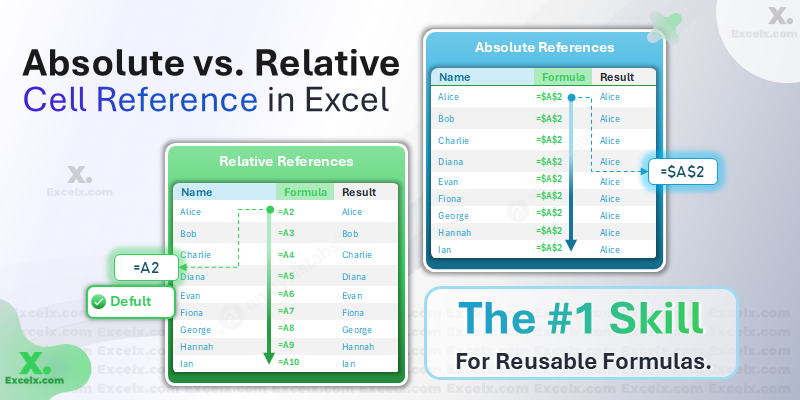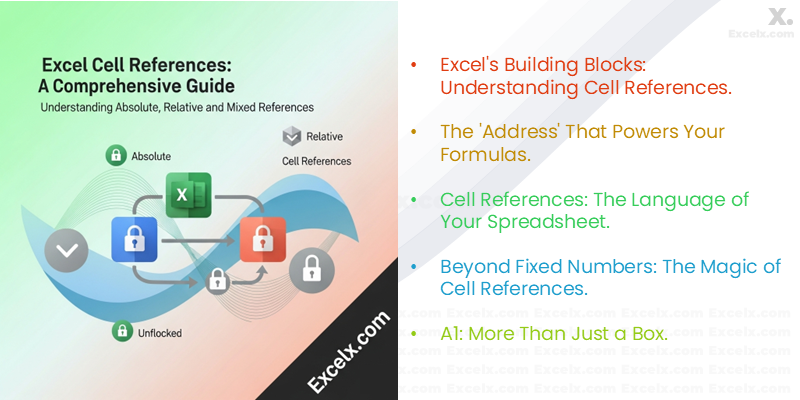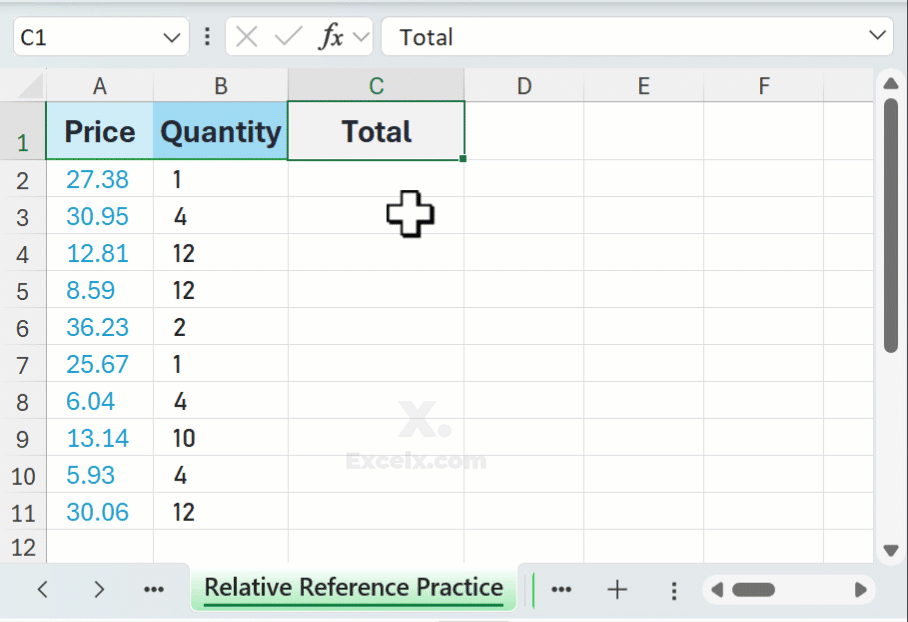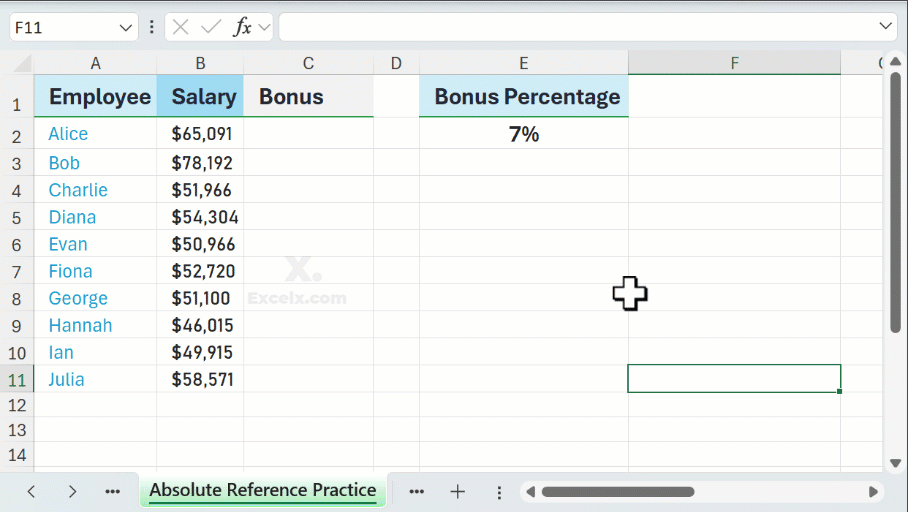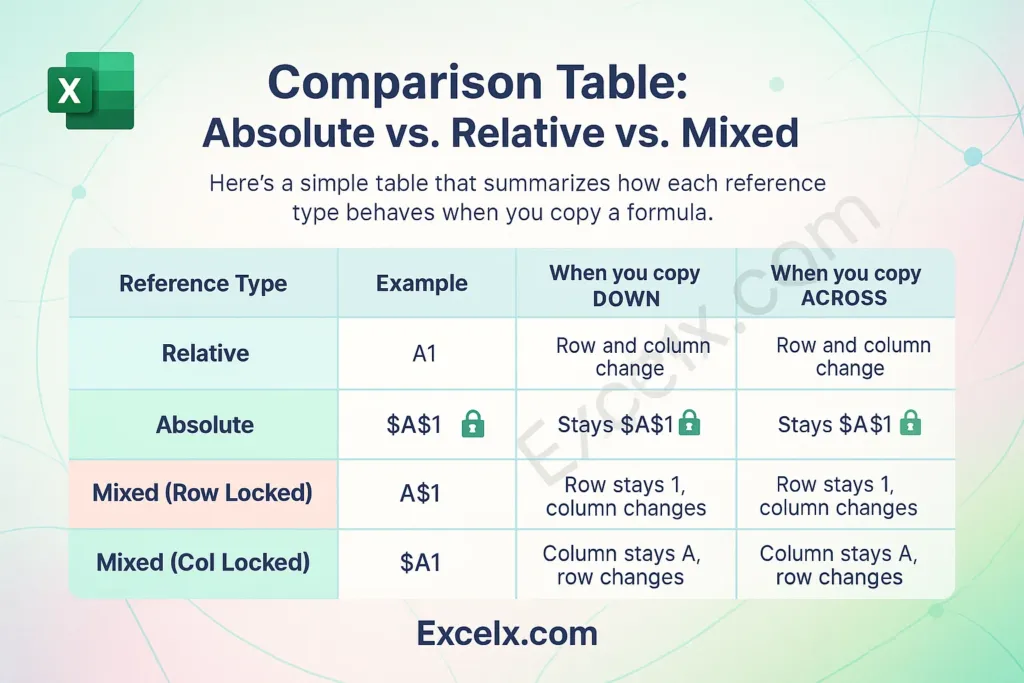Have you ever created the perfect Excel Formula, proudly dragged it down to fill a column, and then watched in horror as it produced errors or completely wrong numbers? It’s one of the most common frustrations for new Excel users.
The good news is that the solution is simple, and it’s one of the most powerful concepts in Excel: understanding the difference between absolute and relative references.
Mastering this single idea will save you countless hours, eliminate errors, and transform how you build spreadsheets. In this guide, we’ll break down exactly what each reference type is, when to use it, and how to switch between them with a single keystroke.
Key Highlights
- Cell Reference: The “address” of a cell (e.g.,
A1) used in a formula to get its value. - Relative Reference (The Default): A reference like
A1. When you copy the formula, the reference changes relative to its new position. - Absolute Reference (The Anchor): A reference like
$A$1. The dollar signs$lock the reference. When you copy the formula, the reference does not change. - The Magic Shortcut: The F4 key instantly cycles through all reference types while you’re editing a formula.
What is a Cell Reference in Excel?
Before we dive into the different types, let’s start with the basics. A cell reference is simply the address of a cell on the worksheet. It’s composed of the column letter and the row number. For example, the address of the cell in the very top-left corner is A1.
When you use A1 inside a formula, you are telling Excel, “Go to cell A1 and use whatever value is stored there in my calculation.” Using cell references instead of typing fixed numbers (like 10 or 20) is what makes your formulas dynamic and powerful. Now, let’s explore how these references behave when you copy them.
Types of Cell Reference in Excel
In Excel, there are three primary types of cell references you can use in your formulas. Understanding each one is crucial for building flexible and accurate spreadsheets.
- 🔓 Relative Reference: The default type. It changes when you copy the formula.
- 🔒 Absolute Reference: A fixed reference. It does not change when you copy the formula.
- 🔐 Mixed Reference: A hybrid type where either the column or the row is locked, but not both.
We will explore each of these in detail below.
What is a Relative Reference? (Excel’s Default Behavior)
By default, every cell reference you create in Excel is relative. This means the reference is not to the actual cell A1, but rather to “the cell that is two columns to the left and on the same row.”
Think of it like giving directions: “Go two blocks west.” If you move one street over and follow the same directions, you’ll end up in a different place.
Practical Example:
Imagine you have “Quantity” in column A and “Price” in column B. In cell C2, you write the formula to calculate the total:
=A2*B2
When you drag this formula down to cell C3, Excel automatically and helpfully changes it to:
=A3*B3
This is exactly what you want. The references updated relative to their new row.
What is an Absolute Reference? (Locking a Cell)
An absolute reference is a cell reference that is “locked” in place. No matter where you copy or move the formula, it will always point to that exact same cell.
You create an absolute reference by adding a dollar sign ($) before both the column letter and the row number.
Syntax: $A$1 (The $ locks the column ‘A’, and the $ locks the row ‘1’).
Think of this as a fixed street address. It doesn’t matter where you are in the city; that address will never change.
Practical Example:
Let’s say you have a list of product prices in column A, and you need to calculate a 5% sales tax for each. The tax rate of 5% is in a single cell, E1.
In cell B2, you write the formula:
=A2*$E$1
When you drag this formula down to cell B3, it becomes:
=A3*$E$1
Notice that A2 correctly changed to A3, but $E$1 remained “anchored.” Without the dollar signs, the formula would have become =A3*E2, resulting in an error because cell E2 is empty.
Comparison Table: Absolute vs. Relative vs. Mixed
Here’s a simple table that summarizes how each reference type behaves when you copy a formula.
| Reference Type | Example | When you copy DOWN | When you copy ACROSS |
|---|---|---|---|
| Relative | A1 |
Row and column change | Row and column change |
| Absolute | $A$1 |
Stays $A$1 (🔒) | Stays $A$1 (🔒) |
| Mixed (Row Locked) | A$1 |
Row stays 1, column changes |
Row stays 1, column changes |
| Mixed (Col Locked) | $A1 |
Column stays A, row changes |
Column stays A, row changes |
The F4 Key: Your New Best Friend
Manually typing dollar signs is slow. Instead, use the shortcut key: F4 key on your keyboard.
While editing a formula, simply click on a cell reference (like E1) and press F4. Excel will automatically cycle through the four possible reference types:
E1(Relative)$E$1(Absolute)E$1(Mixed: Row is locked)$E1(Mixed: Column is locked)
Keep pressing F4 until you get the one you need. This is a huge time-saver!
Practice Makes Perfect: Download Your Example File
The best way to truly understand these concepts is to see them in action. Download our practice workbook to get hands-on experience with each reference type.
Frequently Asked Questions (FAQs)
Q: What do the dollar signs `$` mean in an Excel formula?
A: A dollar sign $ is used to “lock” or “anchor” the column letter or row number that it precedes. It changes a reference from relative to absolute, preventing it from changing when the formula is copied to other cells.
Q: How do I remove an absolute reference?
A: Simply edit the formula and delete the dollar signs manually, or use the F4 key to cycle through the options until you get the relative reference (e.g., A1).
Q: Why are my formulas showing errors or zeros when I copy them?
A: This is the most common symptom of needing an absolute reference. Your formula is likely trying to reference a blank cell because a relative reference has moved incorrectly. Check your formula and see if one of the cell references needs to be “locked” with $ signs.
You’ve Mastered Cell References!
Congratulations! You now understand one of the most powerful and essential concepts in Excel. Knowing when to use relative, absolute, and even mixed references will make your spreadsheets more robust, scalable, and error-free. Remember to use the F4 key to work faster!
Next Step: A great alternative to using absolute references for constants like a tax rate is to give that cell a name. Learn how in our next guide (coming soon): Using Named Ranges in Formulas.
When Did It “Click” For You?
Was there a specific project or problem that made you finally have that “aha!” moment with absolute references?
Share your story or any questions you still have in the comments below!
